Concerns that a tree might fall and damage your property, or even worse, hurt a person, are definitely serious.
Tree hazards are also a liability. If your tree, or one of its limbs, damages someone else’s property or hurts another person, that could easily result in a costly lawsuit.
Whether you’re worried, or you just want to be sure, the last thing you want to do is neglect it and assume everything is okay.
You want to follow through on having your tree inspected and determined if it is really dangerous or if some of the issues you’re noticing aren’t true causes for concern.
Is My Tree Dangerous?
While this article is by no means meant to be a replacement for having your trees inspected by a professional tree inspector, it is our hope that providing some of the common tree hazards, you might recognize how to tell if a tree is dangerous.
Spotting a problem early, and getting a professional on your property for a tree inspection, can reduce your chances of having a serious issue.
Even when you’re in doubt about a potential problem with your tree, it’s always best to err on the side of caution when it comes to something this important.
Here are seven tree hazards to watch for in the trees on your property.
1. Hanging, Broken, or Damaged Limbs
Probably the most visible (and most obvious) of the tree hazards, a broken or hanging limb is a telltale sign that your tree is, in fact, a danger.
However, limb damage isn’t always so obvious. A professional tree inspector will look for splits and cracks to determine how severe the damage is.
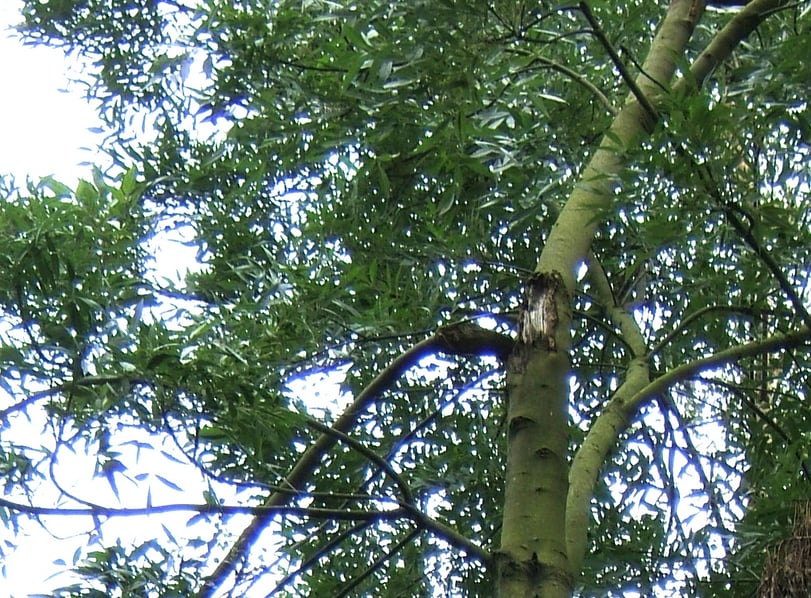
A good tree inspector will bring binoculars to get a closer look at some of the upper limbs.
Because fall-risk limbs are not as easy to diagnose as some might believe, this is a prime example as to why a tree inspection is so important, even if you don’t have hanging or broken limbs.
2. Dead Limbs
It’s not just hanging or damaged limbs that pose a fall risk. Limbs in your tree may be dead without you even realizing it and these can eventually fall as well.
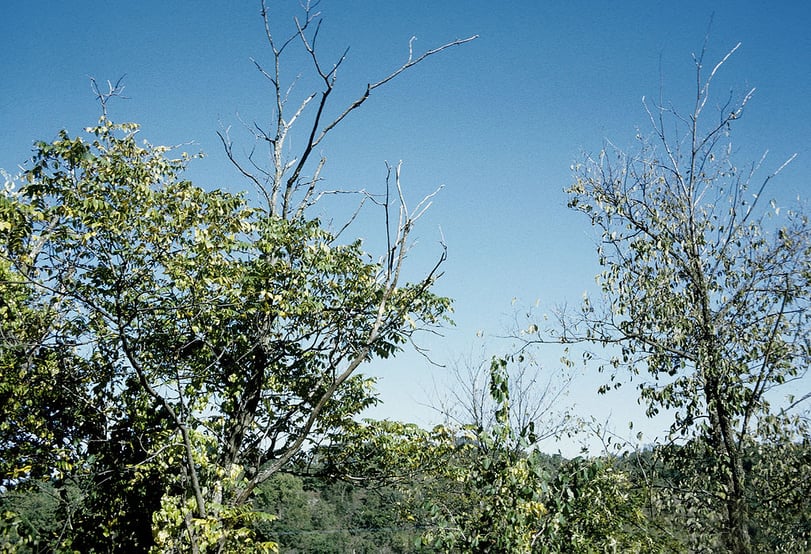
The scary truth is that dead limbs can remain in a tree for years with the decay continuously spreading to live tissue, worsening and deepening the problem—and the danger—unbeknownst to you.
3. Changes in the Bark
Included bark, or “ingrown bark tissues,” can develop where two or more stems grow closer together.
When this occurs, it can create a “V” formation and be more likely to split or break (as opposed to a more normal “U” formation that a professional would look for).
Although proper pruning can prevent this from happening, it’s not uncommon to find that trees were improperly pruned over the years. Improper pruning can also lead to decay, damaged, or weakened areas of the tree.
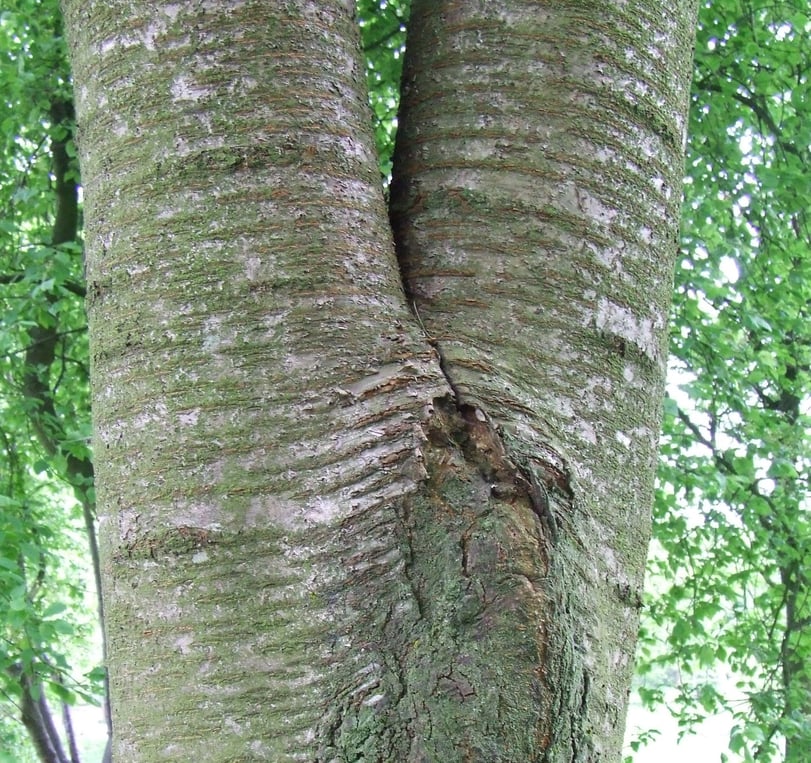
During a tree inspection, a professional will look for included bark and determine whether it is a concern. A professional will also look for any discolored bark or peeling bark, as these can be potential signs of disease, such as a fungus.
Though some trees do naturally shed their bark, this is not true of all species, making this a nuance for a professional to examine.
4. A Tree that Leans
If you have a tree that is leaning, a professional will take into account a number of factors, the most of important of which, is how long has it been leaning.
Has it been this way for a long time or is this a new change? And, does it continue to change? Is it leaning more today than it was last week?
These are the types of questions that you will likely be asked during a tree inspection, and the responses will make a difference in the overall assessment of your tree’s safety.
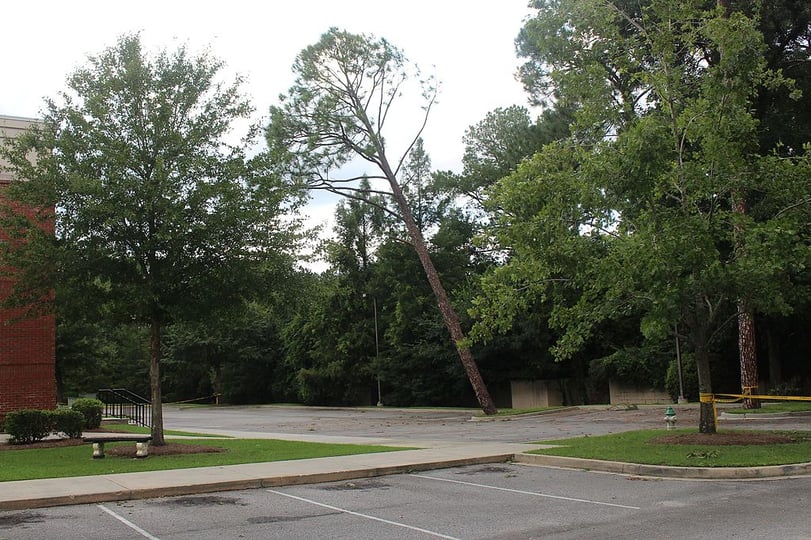
A tree inspector will also take into account what the tree is leaning toward. Is it right over your house? Your car? An area where the kids play? Or is it in the far back of your property where, should it fall, it has no chance of doing harm?
These factors will also come into play in making a decision on the seriousness of your tree issue and the best course of action. Some trees do have a natural lean to them and it may not be a concern. But it’s worth a professional opinion.
5. Root Damage
Tree roots are sometimes unknowingly damaged during construction activities. But problems may not actually manifest until years, even decades, later. That means damage to a tree in your yard could have been done before you even lived there.
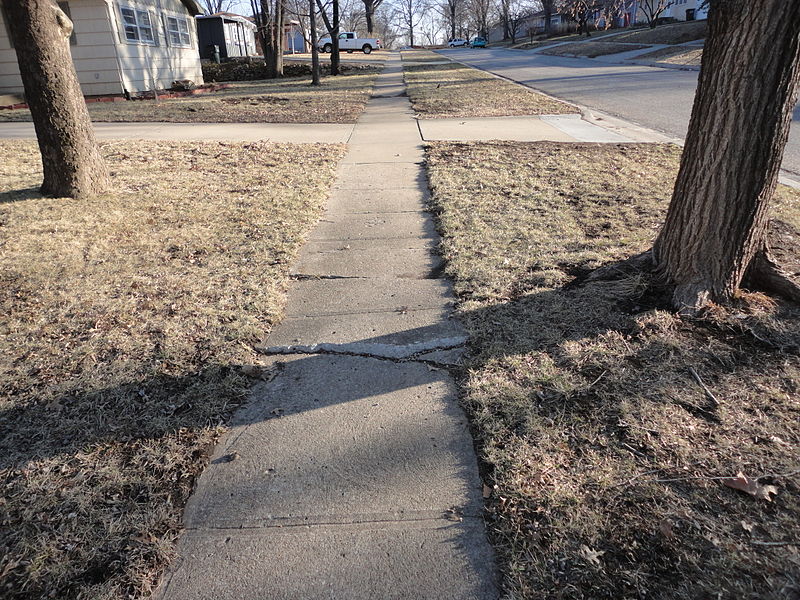
Roots are the most vital aspect of the tree and if they are damaged by construction equipment during a project, the entire tree could eventually die.
Some signs of root damage include wilting, as the tree’s ability to take in moisture has been damaged. Thinning foliage, undersized leaves, dead branches, and limited growth are all signs that the tree’s roots may have been damaged. Of course, these issues can also be signs of other problems that only a professional might distinguish.
6. Exposed, Weakened Trees
Clearing trees during the construction phase can also cause problems for the remaining trees on the property.
For instance, if the lot is wooded, and part of those woods were cleared, the remaining trees (that may have once been situated in the middle of the woods) are now right on the edge of the construction line.
Those trees previously had a windbreak when the other trees were there. Now that they are exposed, they are more susceptible to wind damage.
It’s not to say that these trees won’t survive, but these trees are often overlooked and should be inspected regularly in the following years.
7. Poor Structure
In a forest, trees compete for the sunlight and grow very tall without quite so many branches. However, outside of its natural habitat, a tree in your backyard typically develops a wide crown with a lot of large lower branches and limbs.
Unfortunately, an overburdened canopy and a significant amount of large limbs can structurally weaken the tree over time.
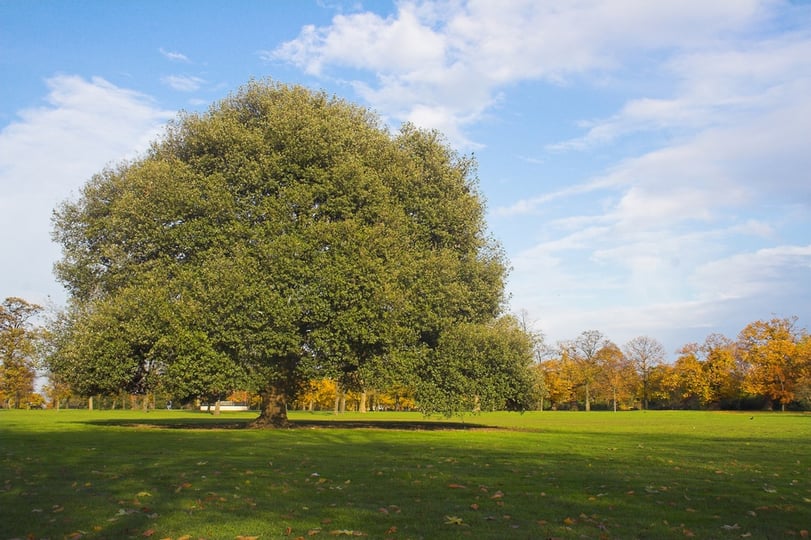
Trees with poor structure are typically the first to break or fall during a storm. But they can actually become a hazard at any time. Your tree’s structure should be evaluated to determine if it poses any risks now or in the future.
Assessing and Correcting Tree Hazards
Getting a professional on your property to perform a tree inspection is the first step to determine whether your tree is safe. From there, it’s possible that steps can be taken to improve safety without removal, though sometimes that’s the only option.
While we can’t speak to exactly what other tree inspectors in our area do, we can tell you how we handle the process. The process starts with a professional coming out to your property and giving you an action plan, should your tree require it.

If there are definite tree hazards, an action plan may include options like tree cabling or bracing to provide better support. Sometimes structural tree pruning is a solution.
We may be able to reduce the wind sail, allowing for better wind flow through your tree’s canopy. Pruning can also help reduce the weight of a tree. All of these things can help make a tree safer.
However, tree removal sometimes is the only safe option. If trying other options such as bracing or pruning is not going to make a difference, we’ll be honest with you that taking it down is your best bet.
Selecting a Tree Care Partner for You
As a homeowner, we commend you for being responsible and proactive by being concerned about the safety of the trees on your property.
And by bringing a professional who has extensive tree experience, like Joshua Tree, to your home, to do a thorough assessment, you are making a wise choice that adds up to safety and security.
With a professional tree inspection completed and an action plan in place should you need it, you’ll be able to feel confident that you’re doing the right thing toward making your yard a safe place. And when it comes to something as serious tree hazards, that peace of mind is invaluable.
With the right care for your trees, you’ll gain valuable peace of mind. If you’re interested in having your trees inspected and their health assured, contact us for a free consultation or give us a call at 833-JTE-TREE.
Image Sources: dead tree, broken tree branch, dead tree branches, included bark, leaning tree, tree and sidewalk




